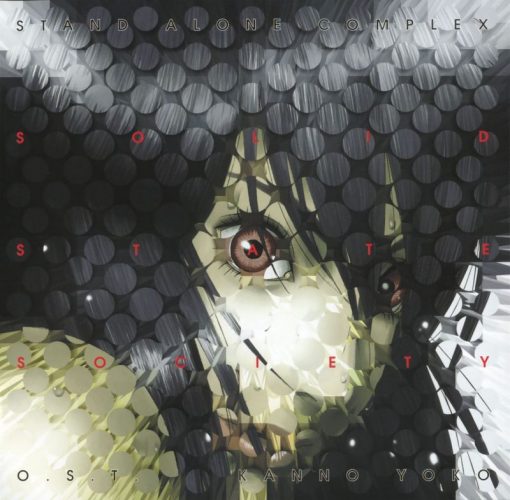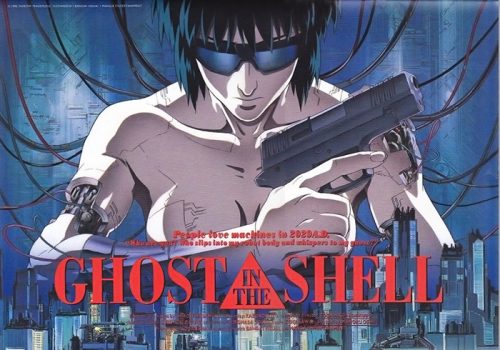
Mamoru Oshii’s Ghost in the Shell in 1995 was a ground-breaking film. It inspired countless movies not only in anime or Japan but across the world and different mediums, spawned many sequels, and started many discussions. Some of the ideas it brought into the mainstream have only really started being discussed in the last decade. It’s safe to say that it was ahead of its time. One of the biggest themes of Ghost in the Shell was that of identity. That theme seems even more relevant today where defining oneself and figuring out one’s varying intersecting identities seems to be a vital part of becoming an adult. This Anime Rewind will delve into what Ghost in the Shell makes of identity and what it had to say about how we identify and define ourselves through our physical identities, how our identity intersects with our memory, and where our identities end and we become new people.
---Spoilers Ahead!---
Physical Identity
There’s an incredible sequence in Ghost in the Shell that lasts well over three minutes but not a word of dialogue is given, and the plot isn’t moved forward in any significant fashion. Nevertheless, so much detail about the world is conveyed in these varying shots of this near-future society. We get short glimpses at Makoto during this sequence, in particular, we see her on a boat staring up at a café where she sees someone that looks exactly like her but isn’t her. Later in that sequence, we see a mannequin-like person that also resembles Makoto behind a mall’s window. This is a future where it’s possible to alter one’s physical identity almost entirely, and where you will find people that look exactly like you. Physical distinctions are such a significant part about how we differentiate ourselves, but Ghost in the Shell makes us consider a world where not just fashion, but our entire physical body becomes an easily altered commodity one can find someone else wearing.
Memory
In Ghost in the Shell, people often connect to the internet directly through the brain. The name of the series comes from this world’s definition of what we might call a soul, in this case, they refer to it as a ghost and the shell is our body. The ghost can be hacked and altered, having its memories entirely rewritten to make someone believe they have lived a life they have never lived. This was especially traumatizing for a man who thought he had a kid and a wife only to discover that such memories are makeshift and that he never had any family relation or bond of that sort. It leaves the viewers questioning how much memory defines our identity. It’s not such a farfetched idea when we consider memory altering diseases one can have in old age. For Makoto, it’s just another question she has for herself as she tries to figure out who she is. Seeing these people with altered memories, seeing people that look exactly like her, it’s unsurprising to see Makoto question her own memories and humanity.
Makoto & Puppet Master’s Merger
The conclusion to Ghost in the Shell doesn’t go the way most people might expect it to go. Sure, it’s an explosive conclusion but it isn’t one that ends with Makoto getting her hands around either the Puppet Master or the villainous government organization trying to hide the truth about the Puppet Master. Instead, we see Makoto lying down next to Puppet Master and considering his proposal for a merger, to essentially produce a new being. For Makoto and Puppet Master, this opportunity for reproduction is a negation of everything that makes them question their humanity. Makoto is a woman with no reproductive capacity while Puppet Master is an artificial intelligence that is theoretically immortal. Their merger would be akin to reproducing and, being a ghost within a shell, would make them mortal. Makoto surprisingly accepts, and they are reborn within the body of a cybernetic child, ready to begin a new life. They are clear in establishing that this new ghost is neither Makoto nor Puppet Master, but something altogether new. Even so, we can still see remnants of both characters within this new being.
Final Thoughts

We’re only scratching the surface of what Ghost in the Shell had to say about identity. Ghost in the Shell delved into topics of transhumanism and gender identity in ways contemporary movies are only starting to delve into today. Ghost in the Shell remains a movie where you can find a new layer worth discussing with every viewing. Having said that, we’d love to hear your thoughts on how you would feel about some of the dilemmas Makoto has to face? What would you do if you saw exact replicas of yourself in your everyday life? Would you question your own identity knowing your memory was easily modifiable? Let us know in the comments down below!
Recommended Post


